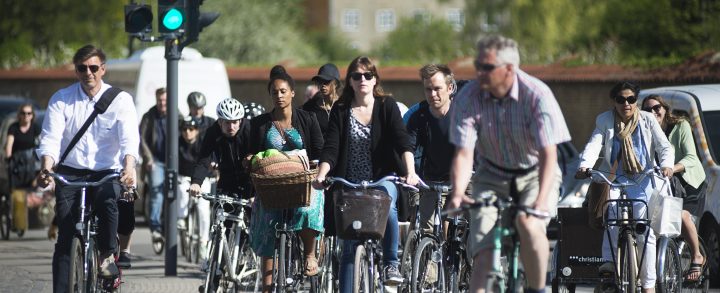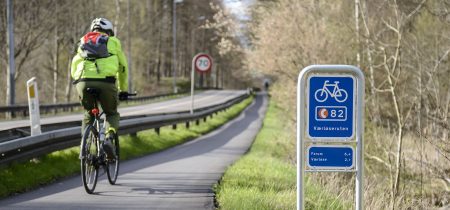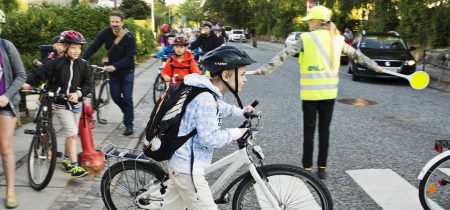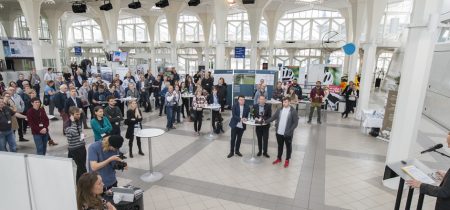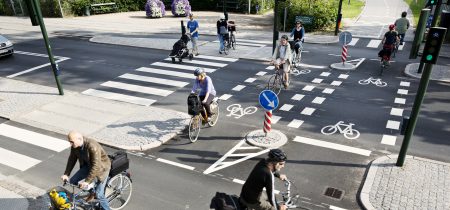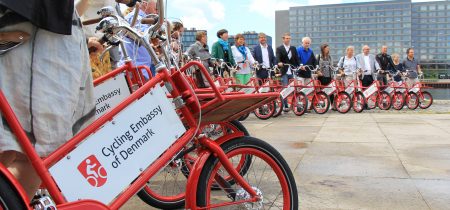The Danish model
The Danish model is a unique type of cooperation that involves both government and civil society organizations in the process of social development. It has proved particularly useful in the field of cycling where cooperation among the different players is essential.
By Klaus Bondam, Danish Cyclists’ Federation
For more than a century the so-called Danish model has been the foundation of a relatively stable and productive Danish labour market. The model is a unique type of cooperation that allows employers and employees to enter into a constructive, organized dialogue about such topics as pay and working hours so that in many cases conflict is avoided.
Over the years the model has been applied to many areas of Danish society where cooperation among the different parties and players has proved to deliver the best results .Naturally, this also applies to the field of cycling.
The present article discusses some of the most important players contributing to the Danish model in the field of cycling today:
- Danish Cyclists’ Federation
- The Municipal Cycling Network
- The Cycle Superhighways Secretariat
- The Cycling Embassy of Denmark
- International partners
Grundtvig and the Danish model
One of the great influences on contemporary Danish society is the Danish theologian and hymn writer, N.F.S Grundtvig (1783-1832). He saw Denmark as a land of solidarity and national community, and considered the sense of community the best guarantee for the welfare of the individual. He famously expresses this idea in the hymn “Far Higher are Mountains” in the words, “In this lies our wealth, on this tenet we draw:/that few are too rich and still fewer too poor.”
Grundtvig’s ideas were later reflected in the Danish cooperative movement which saw the light of day in the 1860s, in the Danish Folk Highschools, and in contemporary Danish workplaces where there is often a very flat hierarchy.
The Danish Model applied to cycling
The Danish model also applies to the field of cycling. Ever since Danish Cyclists’ Federation was founded in 1905 it has been customary for the authorities to turn to the association as the mouthpiece of its users (i.e. cyclists) whenever the question of cycling arises.
Throughout the years there has been an excellent dialogue on the local, regional and national levels between the Danish Cyclists’ Federation and the relevant authorities, and, of course, other relevant players, as well, including politicians and government workers.
Over the years this type of organizational, network- based cooperation has been significantly expanded. Danish Cyclists’ Federation, for example, is part of the executive committee of the Danish Road Safety Council (Rådet for sikker trafik) and is a Minister-appointed member of the Danish Road Safety Commission (Færdselssikkerhedskommissionen). Danish Cyclists’ Federation is also a consulting party on legislation, government directives and circulars.
In addition there are a number of other strong networks and organizations today, including:
- Cycling Embassy of Denmark
- Danish Cycling Tourism
- The Municipal Cycling Council (Det Kommunale Cykelfagråd)
- The Cycling Policy Think Tank (Det Cykelpolitiske Tænketank)
These are all strong, visionary, idea-generating fora characterized by a broad-based membership and a high level of activity. The users, Danish Cyclists’ Federation, participate actively in the work of all these networks and handle the secretariat work of some of them. This makes Danish Cyclists’ Federation a key player in the Danish debate on cycling policy.
CASE: The example of the right-turn committee
An excellent example of the Danish model in the field of cycling is the right- turn committee. It was appointed in 2005 by the Danish Ministry of Transport with the aim of preventing dangerous right- turn casualties when right-turning trucks collide with cyclists, often fatally.
The right- turn committee is composed of members of the trucking industry, drivers as well as haulage contractors, Danish Cyclists’ Federation, the Police, the Danish Road Safety Council, as well as researchers and representatives from government ministries and agencies, the Accident Investigation Board, etc.
The partnership lasted for a number of years, and proposed a broad spectrum of knowledge-based, inclusive measures. The result was that the number of annual right- turning cycling casualties dropped from approx. 35-40 to 10-15.
In 2018 the Danish Road Directorate published an in-depth report entitled Prevention of Right- Turning Accidents in Denmark (Forebyggelse af højresvingsulykker i Danmark) which discusses the right turn -committee’s cooperative partnership and results over the course of two decades.


